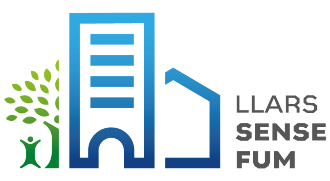Effectiveness of an evidence-based intervention to promote smoke-free homes: a randomised controlled trial
Background
Second-hand tobacco smoke (SHS) is a mixture of smoke exhaled by a smoker and smoke from the burning end of a cigarette. Exposure to SHS is an important public health problem as it causes several life-threatening diseases, among others lung cancer, stroke, chronic obstructive pulmonary disease (COPD), and ischemic heart disease in adults. Moreover, children exposed to SHS are at an increased risk for sudden infant death syndrome (SIDS), acute respiratory infections, otitis media, and more severe asthma. While exposure to SHS in most public places is addressed by smoke-free regulations, smoking and, consequently, the exposure to SHS at private places, such as homes, is still prevalent and represents a significant public health challenge.
Currently in Spain a high proportion of households allow smoking inside home resulting in unneglectable prevalence and burden of exposure to SHS at home among adults and children; moreover, this situation may be exacerbated due to the COVID-19 restriction measures. No comprehensive and systematic support is offered at national or local levels for those who want to create smoke-free homes resulting in a meaningful gap in health prevention services. Therefore, there is an important need to count with proven interventions and offer them to the Spanish population.
Objectives
Main objective of the project is to evaluate the effectiveness of an evidence-based intervention to create smoke-free homes in households with children.
The specific objectives are:
- To adapt and test the feasibility of an evidence-based intervention to promote SHF in the Spanish context among households with children.
- To evaluate the mid-term (3 and 6 months postbaseline) effectiveness of the intervention in terms of full smoking bans and a decrease in second-hand exposure at home in households with children.
- To characterise the socio-economic factors at both the individual level and contextual level that impact the effectiveness of the intervention.
- To determine demographic and smoking-related moderators of the intervention effectiveness.
- To analyse intervention implementation in terms of adoption, reach, fidelity, and other implementation indicators.
Methods
We will conduct a hybrid type 2 randomised controlled trial. Target population of this intervention are the families with children (≤12 years old) and at least one smoker who allow smoking in the home and who reside in the Metropolitan Area of Barcelona. The participants of the trial will be randomised into the intervention group (IG, 201 families) and the control group (CG, 201 families). The recruitment will be conducted through the Associations of the Students’ Families of primary schools in the Metropolitan Area of Barcelona. The intervention to be evaluated within this study was developed by the Emory University Rollins School of Public Health within the Smoke-Free Homes Project. It is organised in 5 steps (Decide; Talk; Pick a date; Make it happen; and Keep it up) and is delivered during 6 weeks in 2-week intervals (first mailing, counselling call, and two other mailings). The intervention will be delivered only to the IG participants in the CG will receive a brief advice (leaflet) about how to create a smoke-free home. All participants will provide an informed consent prior to randomisation. The data on both the effectiveness of the intervention and implementation will be collected at baseline, 3 months after the intervention delivery and 6 months after the intervention delivery. Primary outcome of the intervention effectiveness to be measures is the prevalence of households with complete smoking ban in the homes at follow-ups (self-reported). Secondary outcomes: second-hand smoke exposure level at follow-ups (airborne nicotine concentration and self- reported). The intervention implementation process will be evaluated using the RE-AIM model.
Duration
January 2022-December 2024
Funding
Grant PI21/00818, AES-ISCIII (114.950,00€).
Research team
Angelina González (Public Health Agency of Catalonia)
Carmen Cabézas (Public Health Agency of Catalonia)
Collaborating Researchers
Maria José López (Public Health Agency of Barcelona)
Michelle Kegler (Emory University)
Łucja Bundy (Emory University)
Shadé Owolabi (Emory University)





